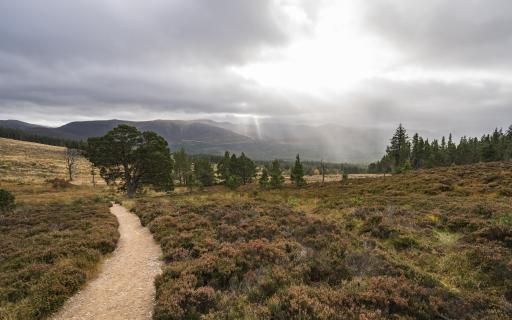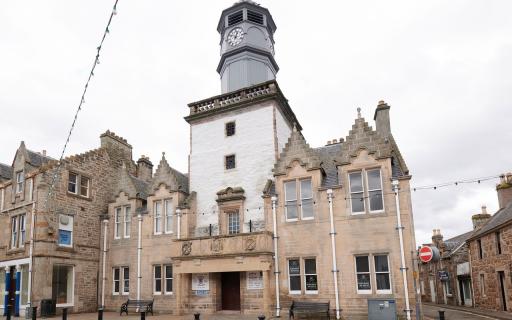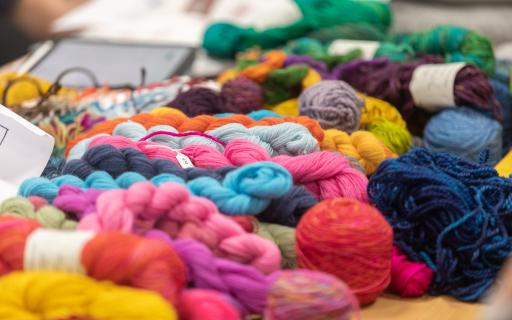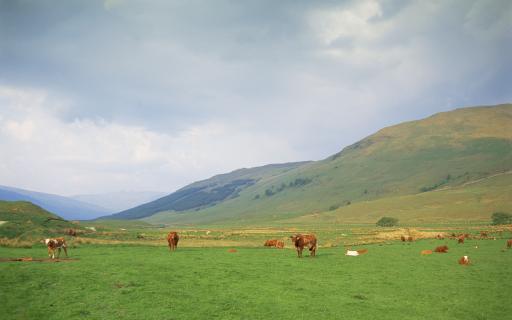
Blackhouse
The Wvyis Stitchers came together from Dingwall, Garve and the surrounding area to stitch the story of once firm feature of our landscapes - an taigh-dubh.
This is their story.
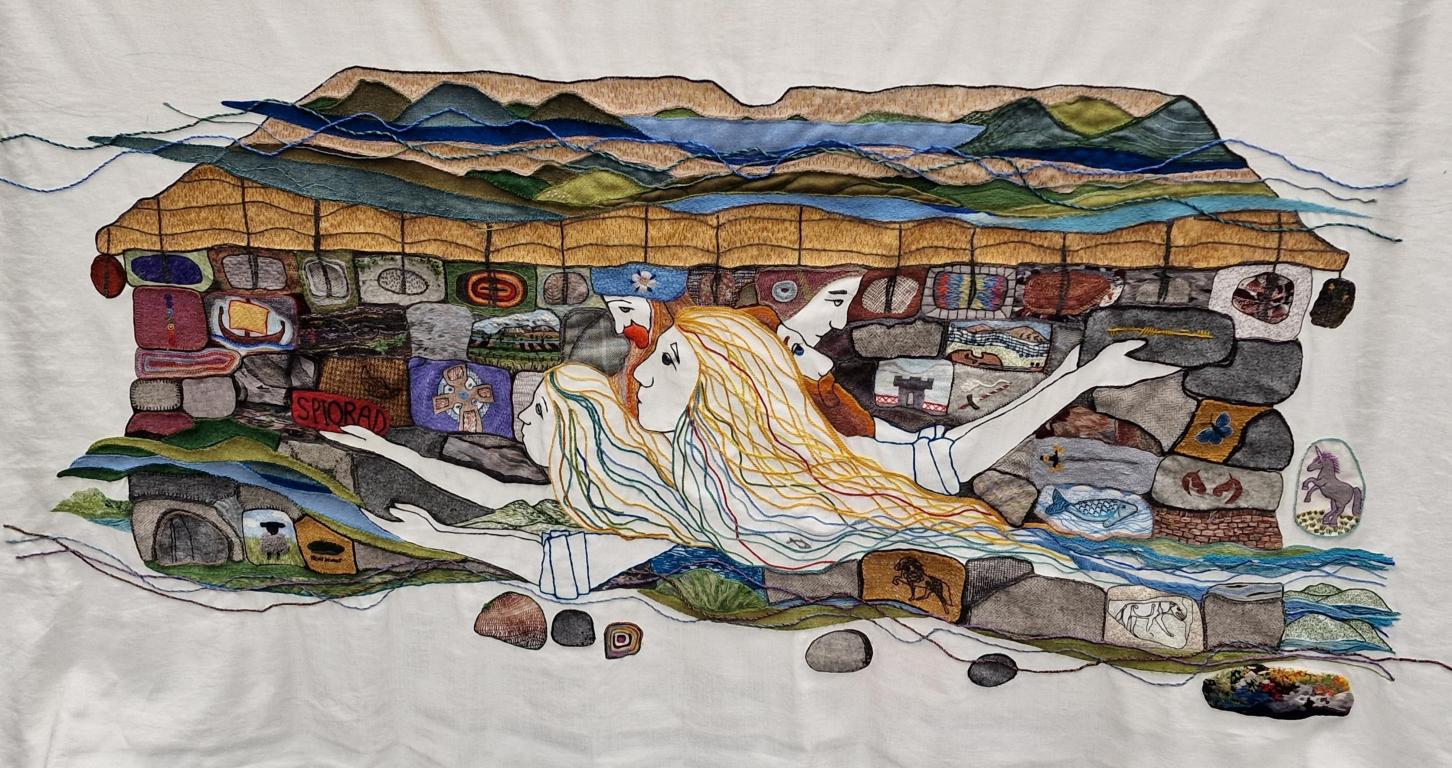 The Blackhouse Panel
The Blackhouse PanelImage provided by Tapestry of the Highlands and Islands
From a distance, the houses in Highland townships and crofting communities could be difficult to make out. They were low, single-storey and not built from concrete or bricks or straight-sawn timber but from materials lifted out of the landscape, from the stone, turf, reeds and bracken of the glens and the straths. Not even a spiral of smoke on a still day gave them away, for none had chimneys. They were probably known as blackhouses to distinguish them from taighean-geala, the newer white houses whose walls had been rendered, better to keep out the weather. Double walls were built and earth packed between them, and the rectangular structure roofed with a wooden ridge pole and rafters before a thatch of turf or reeds was laid.
Against the storms that howled off the Atlantic, the thatch was roped and the ends weighted with heavy stones to keep it in place. A hearth was laid in the centre of the main room, often the only room, and the peat reek seeped through the roof. In these window-less little houses, a fire burned constantly, winter and summer. Milker cows were often kept at one end of a blackhouse, penned in by a partition. An exiled author once wrote of his neighbour, Murdo MacLean, and his cow, Daisy: ‘For twenty years, there was never a cross word between them.”
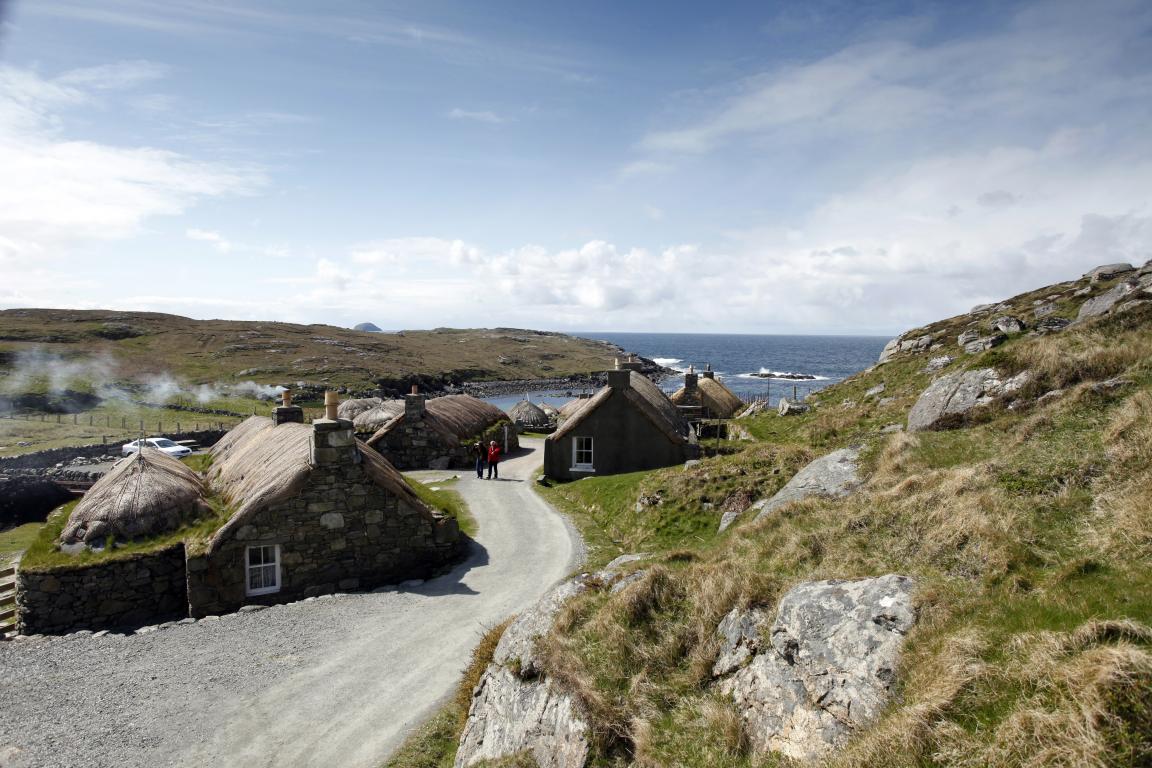 Gearrannan Blackhouse Village Museum, Lewis
Gearrannan Blackhouse Village Museum, LewisImage provided by VisitScotland/ Paul Tomkins
These buildings were lived in for hundreds of years and represent an emotive symbol of local heritage. They also represent a poignant reminder of a lost way of life, abandoned as centuries passed due to socio-economic change, emigration and hardship.
However, with recreations across the Highlands, it is not too hard to imagine what life may have been like in the blackhouse. Picture a ceilidh of neighbours on a darkening night. The unmistakable aroma of peat fire filling the air. A cruisie lamp illuminating the inside. The sound of shared laughter ringing from the seise, not too far from the kindling fire. Tales of love, loss and life stories shared together late into the night.
Listen to the stories of the Wyvis Stitchers as they tell of panel meetings (the good and the smelly!), moving tributes to friends and local legends which have all been stitched into their panel.
The Wyvis Stitchers not only created a phenomenal Blackhouse structure, but they stitched into the stones living memories of people and place - a homage to the area they call home.
The stones contain stories of local legends, wildlife, music, craft and characters well remembered by the community.
Read our journey stone stories below:
- The Wolf of Ardross
- Highland Cow
- Trigpoint View to Ben Wyvis - Cnoc Croit na Maoile/Ord Hill
- Fiddle Tune Inspiration
WITH THANKS TO THE WYVIS STITCHERS
This panel was stitched by Laura, Ann, Aileen, Anne, Denise, Diana, Joyce, Kim, Lizzie, Lucy, Mairi, Michelle, Nicky, Rona, Rosalie and Sandra who gave their time, skill and energy to completing a fantastic artwork for their area.
If you would like to see the panel up close and admire the detail of their work, you can currently view the panel in the Inverness Castle Experience.
EXPLORE MORE STITCHERS STORIES BELOW
Swipe left for more

